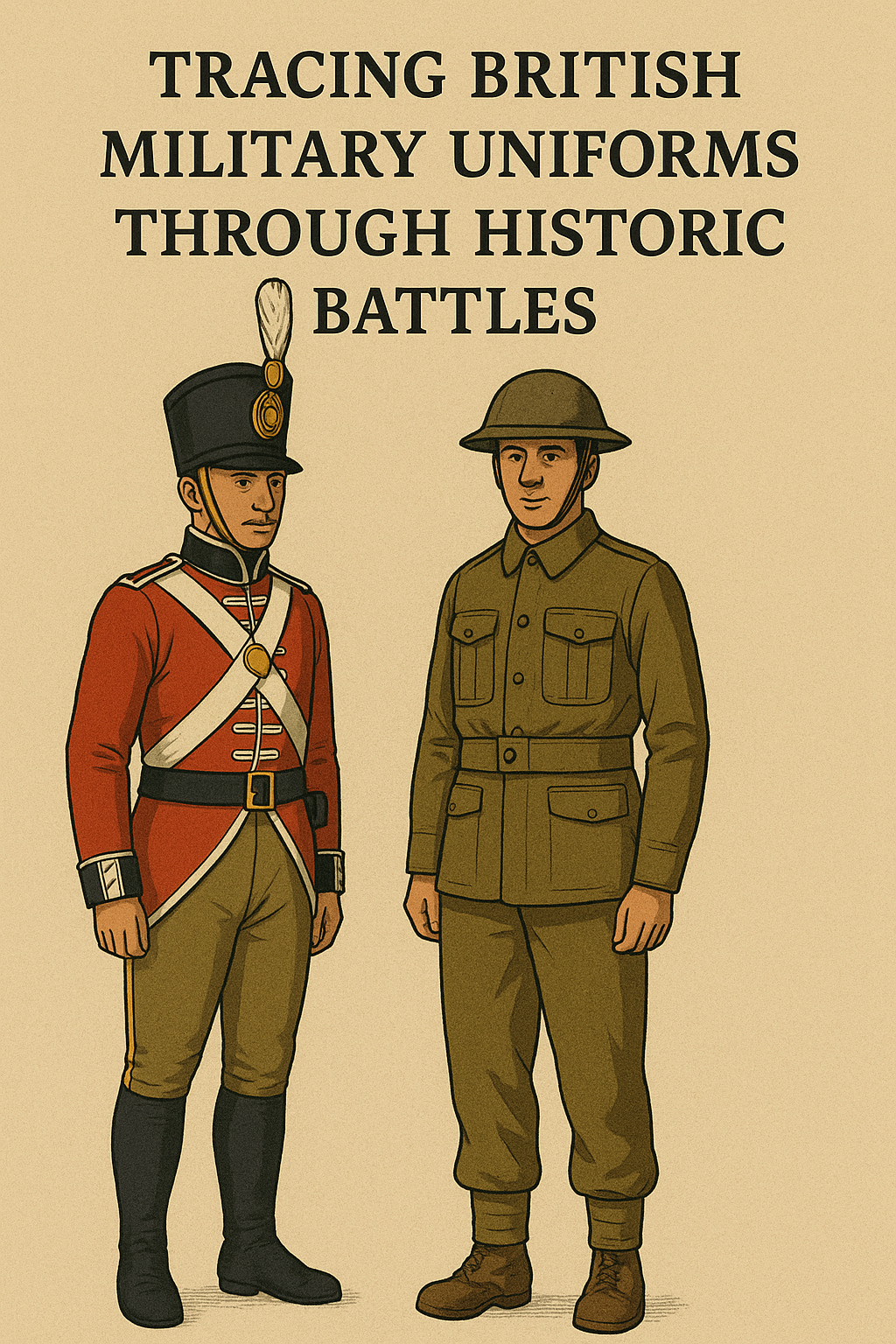
From Redcoats to Camouflage: Tracing British Military Uniforms Through Historic Battles"
Published on May 03, 2025
From Redcoats to Camouflage: Tracing British Military Uniforms Through Historic Battles
Introduction
British military uniforms have long captured the imagination of historians, collectors, and reenactors alike. More than just garments, they are symbols of valour, discipline, and national identity. Whether worn in the smoke of cannon fire at Waterloo or in the bitter cold of the Falklands, each uniform tells a story about the era it belonged to. In this article, we trace the evolution of British military attire from the glory days of the Napoleonic Wars to the stark realities of modern combat in the Falklands War.
1. Napoleonic Wars: The Age of the Redcoats
Defining the Redcoat Image
During the Napoleonic Wars (1803–1815), the British army's most recognizable feature was the redcoat—a woollen, scarlet jacket that became an enduring symbol of British military power. This iconic uniform reflected the values and combat philosophy of the era: visibility, organization, and regimental pride.
Key Characteristics:
- Material: Wool was the primary fabric, offering warmth in European climates and a sturdy, structured look.
- Color Scheme: Red dominated the battlefield. The bright scarlet coats were accented with white cross-belts and unique regimental facings (lapels, cuffs, and collars), which differed in colour depending on the unit.
- Headgear: Infantrymen wore "shakos," tall, cylindrical hats often adorned with brass badges and plumes.
Practical Challenges
Though visually striking, redcoats were not designed for concealment. As warfare evolved, this posed significant tactical challenges. Officers began adopting green and darker-toned uniforms for light infantry and specialized rifle regiments like the 95th Rifles, signalling an early move toward practical combat attire.
Legacy of the Era
The redcoat uniform stands as a hallmark of the Napoleonic period. It wasn't just about functionality—it was a statement of power, unity, and national pride. Enthusiasts and reenactors today treasure accurate replicas of these uniforms, often crafted with painstaking detail to reflect their original forms.
2. The Interwar and WWII Battledress Uniform
As warfare modernized through the 20th century, British military attire evolved drastically. By the time of the Second World War, the traditional scarlet had vanished, replaced by the standard-issue battledress uniform.
Highlights of the Battledress Uniform:
- Design: Short woollen jacket (blouse) with high-waisted trousers
- Colour: A muted khaki brown designed for camouflage in European environments
- Utility: Pockets for field use, better insulation, and increased mobility
This uniform remained in service until the late 1960s and laid the foundation for even more modern combat gear used during the Falklands War.
3. The Falklands War: Function Over Form
The 1982 Falklands War showcased the British Army's fully modernized approach to combat attire. The once-flashy colours gave way to subdued and functional camouflage tailored to the harsh, unpredictable climate of the South Atlantic.
Uniform Elements in the Falklands Conflict:
- Camouflage Pattern: Disruptive Pattern Material (DPM) became the standard, blending into the rocky, tundra-like Falklands terrain.
- Layered Garments: Soldiers wore layered uniforms, including smocks and windproofs, to adapt to freezing conditions.
- Combat Webbing: A critical component for carrying ammunition, tools, and survival gear—ergonomically integrated into the uniform system.
- Footwear: Combat boots were reinforced and insulated for maximum durability and protection.
Unit-Specific Customization
Different units—like the Parachute Regiment and Royal Marines—had unique variations of the standard uniform, adjusted for their specific roles in the amphibious and mountainous environments.
4. Comparing Two Eras of British Uniforms
FeatureNapoleonic Wars (1803–1815)Falklands War (1982)
Primary Fabric Wool Synthetic blends and cotton
Colour Scheme Scarlet red with regimental facings Camouflage (DPM) in earth tones
Headgear Shako, bearskin for guards, DPM boonie hats, steel helmets
Functionality Formal, symbolic, limited mobility Functional, layered, tactical efficiency
Climate Adaptation Moderate European climate Harsh South Atlantic terrain
This comparison reveals just how radically uniform design has changed—shifting from ceremonial and hierarchical aesthetics to tactical survival and practicality.
5. Why Military Uniforms Matter Today
Military uniforms do more than serve a function—they encapsulate history, represent national pride, and serve as a direct link to the past. For collectors, reenactors, and educators, wearing or displaying these garments allows for immersive storytelling and historical interpretation.
At Paddelaters, the goal is to preserve this history through carefully crafted reproductions. Every stitch, button, and seam is made to reflect the accuracy and craftsmanship of the original designs, whether from the Napoleonic battlefields or the windswept hills of the Falklands.
6. Explore the Paddelaters Collection
Paddelaters offers a curated selection of historically accurate British uniforms, including:
- Napoleonic British uniforms: Perfect for reenactors, museums, and enthusiasts
- WWII battledress uniforms: Featuring original patterns and military-grade materials
- British Falklands War uniforms: Faithful to the 1982 military specifications
Each piece is researched and manufactured with precision to ensure authenticity and durability.
Conclusion
From the elegant redcoats of the Napoleonic Wars to the rugged camouflage of the Falklands, British military uniforms offer a fascinating lens through which to study history. These garments not only reflect changes in warfare and technology but also carry the stories of the soldiers who wore them. Whether you're a reenactor, a historian, or simply a fan of military heritage, owning a replica of these uniforms is a way to keep history alive. Paddelaters proudly contributes to this legacy, one uniform at a time.
